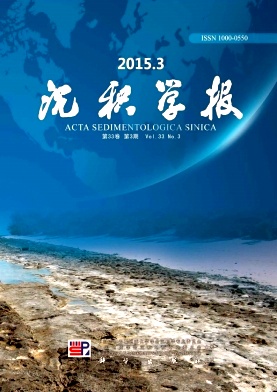Identification of Ooid Primary Mineralogy:A clue for understanding the variation in paleo-oceanic chemistry
doi: 10.14027/j.cnki.cjxb.2015.03.008
- Received Date: 2014-04-28
- Rev Recd Date: 2014-07-19
- Publish Date: 2015-06-10
-
Key words:
- carbonate ooids /
- original ooid mineralogy /
- seawater Mg/Ca /
- carbonate saturation state
Abstract: As one type of coated grains in the process of carbonate deposition, ooids and oolite are usually used as proxies for sedimentary background, hydrodynamic condition, paleoclimate, hydrocarbon reservoir, etc. In last two centuries, numerous studies were carried out promoting the understanding of such “charming” carbonate grains. However, the mineral composition and controlling factors of ooid have been neglected in Chinese literatures for a long time. The CaCO3 polymorph mineral of ooid had been undergone secular periodic variations in geological history. In Phanerozoic time, three “aragonite and high-Mg calcite” dominated intervals (also called “aragonite sea” periods) and two “low-Mg calcite” dominated intervals (also called “calcite sea” periods) were identified firstly in the light of the mineralogical differences between original aragonitic (with high-Mg calcitic) and low-Mg calcitic ooids. The primary mineralogy of ooids implies the great influence on cortical fabric, degree of conservation, as well as diagenetic history, and may further provide a clue for understanding the variation in paleo-oceanic chemistry. Interpretation of the original mineralogy of ooid cortices requires assessment of (1) morphology and orientation of crystallites in cortices, (2) manner of preservation of cortical layers, and (3) elemental concentration data, especially of Sr and Mg. Primary aragonite ooids exhibit poorly preserved morphologies and recrystallization of cortical fabrics, remaining relics with selective diagenetic dissolution fabrics with respect to aragonite, and high concentrations of Sr (generally >2 000 ppm); Primary high-Mg calcite ooids generally exhibit low-level deformation replacement of radial (or radial-concentric) fabrics, low concentrations of Sr (generally <1 000 ppm) and high values of Mg, sometimes containing microdolomite inclusions in cortical layers; Primary low-Mg calcite ooids exhibit well-preserved radial (or radial-concentric) fabrics, low concentrations of Sr and Mg. In addition, the composition of bimineralic ooids presumably has two patterns, one is consisted of calcitic inner cortex and aragonitic outer cortex, the other is alternated between calcitic and aragonitic layers. Manner of differences in fabrics and preservation styles could help us infer the bimineralic type. It is noted that the original mineralogy of ooid is thought to be strongly influenced by seawater chemistry, especially by Mg/Ca ratio, atmospheric CO2 partial pressure and carbonate saturation state. The Mg/Ca ratio plays a critical role in determining the original mineralogy of ooids in a long timescale. In some temporal evens, however, suggested other factors may induce the fluctuation of primary ooid mineralogy with the stabilized ratio of Mg/Ca. For instance, glacio-eustatic cycles caused temperature fluctuations (associated with CO2 fluctuations) and lately supposed to disturb the carbonate saturation state, extremely arid climate might increase local carbonate saturation state, and the volcanism released a large quantity of CO2 that elevated temperature and atmospheric CO2 partial pressure and finally causing the decreased in carbonate saturation state. Therefore, the study on features and controlling factors of original ooid mineralogy may provide a new perspective to understand the paleo-oceanic chemistry.
| Citation: | LI Fei, WU SiQin, LIU Ke. Identification of Ooid Primary Mineralogy:A clue for understanding the variation in paleo-oceanic chemistry[J]. Acta Sedimentologica Sinica, 2015, 33(3): 500-511. doi: 10.14027/j.cnki.cjxb.2015.03.008 |






 DownLoad:
DownLoad: